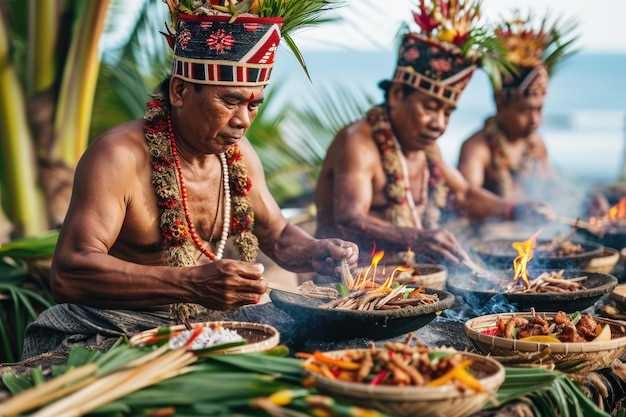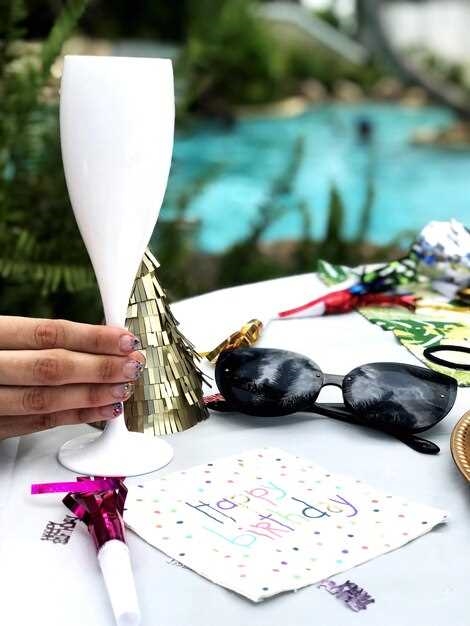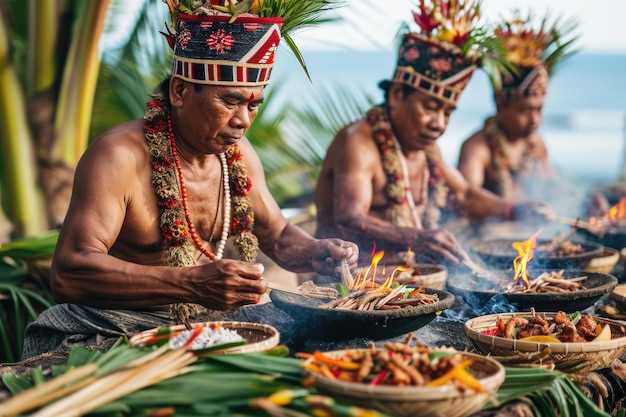
Embark on a captivating journey to the mesmerizing archipelago of the Maldives, where the vibrant tapestry of local traditions, festivities, and delectable cuisine awaits. Delve into the heart of this tropical paradise and discover a world brimming with unique experiences that will leave an indelible mark on your soul.
Unveil the secrets of the Maldivian heritage as you immerse yourself in the customs and rituals that have been passed down through generations. From the moment you set foot on this idyllic land, you will be enveloped in a sense of wonder as you witness the harmonious blend of ancient practices and modern influences.
Indulge your senses in the kaleidoscope of colors, sounds, and flavors that define the Maldivian culture. From the vibrant hues of traditional costumes to the rhythmic beats of traditional music, every aspect of the local festivities exudes an aura of celebration and joy. Allow yourself to be swept away by the infectious energy of the Maldivian people as they come together to honor their rich heritage.
Prepare your taste buds for a tantalizing adventure as you savor the exquisite flavors of the Maldivian cuisine. From mouthwatering seafood delicacies to aromatic spices that awaken the senses, each dish tells a story of the island’s bountiful resources and the creativity of its people. Indulge in traditional dishes such as garudhiya, a fragrant fish soup, or mas huni, a delightful combination of shredded tuna, coconut, and spices, and experience the true essence of Maldivian gastronomy.
Traditional Practices: Preserving the Cultural Heritage
In the enchanting realm of the Maldives, a treasure trove of traditional practices awaits those seeking to delve into the rich cultural heritage of this island nation. These time-honored customs and rituals, passed down through generations, serve as a testament to the enduring spirit of the Maldivian people and their commitment to preserving their unique identity.
Embracing the Past:
One of the remarkable aspects of the Maldivian culture is its deep-rooted connection to the past. The traditional practices serve as a bridge between the present and the bygone eras, allowing the Maldivians to honor their ancestors and maintain a sense of continuity. From the captivating art of dhoni boat building to the intricate craftsmanship of lacquerwork, each practice carries with it a story of resilience and ingenuity.
Preserving Cultural Diversity:
The Maldives, with its diverse ethnic groups and vibrant communities, is a melting pot of cultures. The traditional practices play a crucial role in preserving this cultural diversity, as they provide a platform for different communities to express their unique traditions and customs. Whether it is the mesmerizing traditional dances of the Bodu Beru or the melodious tunes of the Maldivian traditional music, these practices showcase the kaleidoscope of cultures that coexist harmoniously in the Maldives.
Passing Down the Legacy:
Central to the preservation of the cultural heritage is the transmission of knowledge from one generation to the next. The traditional practices serve as a means of passing down invaluable skills and wisdom, ensuring that the cultural legacy remains alive and thriving. Through apprenticeships and mentorship, the younger generation learns the intricacies of traditional crafts, the significance of rituals, and the importance of preserving their cultural heritage.
Embracing Change:
While the traditional practices are deeply rooted in the past, they also evolve with the changing times. The Maldivian people understand the importance of adapting to the modern world while staying true to their cultural heritage. This harmonious blend of tradition and innovation is evident in various aspects, such as the fusion of traditional flavors with contemporary culinary techniques, creating a unique and tantalizing Maldivian cuisine.
Conclusion:
The traditional practices in the Maldives are not merely relics of the past; they are living embodiments of the cultural heritage that continues to shape the identity of the Maldivian people. By preserving these practices, the Maldives ensures that its rich traditions, festivals, and local cuisine remain an integral part of its vibrant cultural tapestry for generations to come.
Festivals in Maldives: Celebrating the Rich Cultural Diversity
Maldives is a vibrant nation that takes great pride in its diverse cultural heritage. The festivals celebrated in this archipelago are a testament to the rich tapestry of traditions and customs that have been passed down through generations. These festivals provide a unique opportunity to immerse oneself in the vibrant colors, lively music, and captivating rituals that define the cultural identity of the Maldivian people.
One of the most eagerly anticipated festivals in Maldives is the Eid-ul-Fitr, which marks the end of Ramadan, the holy month of fasting for Muslims. During this festival, families come together to celebrate with feasts, prayers, and the exchange of gifts. The streets are adorned with colorful decorations, and traditional Maldivian dishes, such as mas huni (a combination of shredded smoked fish, grated coconut, and onions) and hedhikaa (a variety of sweet and savory snacks), are prepared and shared with loved ones.
Another significant festival in Maldives is the National Day, celebrated on the 26th of July each year. This day commemorates the country’s independence from British colonial rule in 1965. The festivities include parades, cultural performances, and exhibitions that showcase the Maldivian heritage. Traditional music and dance performances, such as the Bodu Beru (a lively drumming performance) and the Dhandi Jehun (a traditional dance), are highlights of the celebrations.
The Maldives also celebrates the Islamic New Year, known as Maal Hijrah, which marks the migration of Prophet Muhammad from Mecca to Medina. This festival is observed with prayers, sermons, and reflections on the teachings of Islam. It is a time for spiritual renewal and gratitude for the blessings received throughout the year.
Additionally, the Maldives hosts the Maldives Whale Shark Festival, a unique event that promotes marine conservation and raises awareness about the importance of protecting the whale shark population in the region. This festival combines educational activities, art exhibitions, and cultural performances to engage both locals and tourists in the preservation of this magnificent species.
These festivals in Maldives offer a glimpse into the diverse cultural traditions and practices that have shaped the identity of the nation. They provide an opportunity for locals and visitors alike to come together, celebrate, and appreciate the rich cultural heritage of the Maldivian people.
Exploring the Maldivian Cuisine: A Gastronomic Adventure
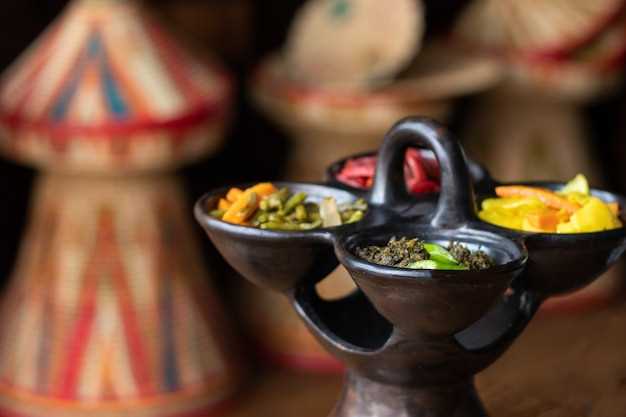
Embark on a culinary journey through the vibrant flavors and unique dishes of Maldivian cuisine. Indulge in a gastronomic adventure that will tantalize your taste buds and introduce you to the rich culinary heritage of the Maldives.
A Fusion of Flavors
Maldivian cuisine is a delightful blend of influences from neighboring countries such as India, Sri Lanka, and the Middle East. The result is a fusion of flavors that create a truly unique and unforgettable dining experience. From aromatic spices to fresh seafood, each dish is a harmonious combination of ingredients that reflects the cultural diversity of the Maldives.
Traditional Delicacies
Discover the traditional delicacies that have been passed down through generations in the Maldives. From the famous Garudhiya, a flavorful fish soup, to Mas Huni, a traditional breakfast dish made with shredded smoked fish, coconut, and onions, each bite is a taste of authentic Maldivian cuisine. Don’t miss out on trying the beloved Bis Keemiya, a pastry filled with spiced fish or chicken, or the delightful Fihunu Mas, grilled fish marinated in a blend of spices.
- Garudhiya: A flavorful fish soup
- Mas Huni: Shredded smoked fish, coconut, and onions
- Bis Keemiya: Pastry filled with spiced fish or chicken
- Fihunu Mas: Grilled fish marinated in a blend of spices
Experience the traditional Maldivian way of cooking with the use of traditional techniques and ingredients. From the use of coconut milk to the art of smoking fish, each method adds a distinct flavor and texture to the dishes.
Seafood Extravaganza
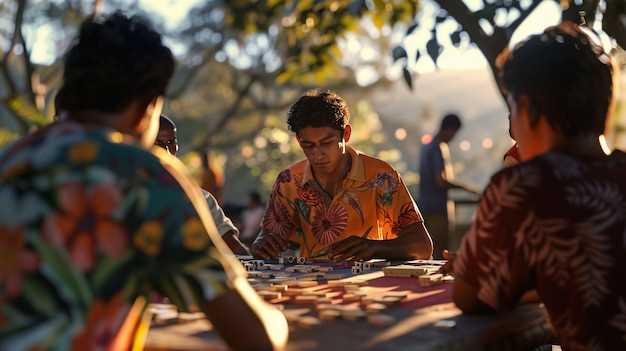
As an archipelago, the Maldives is renowned for its abundance of fresh seafood. From succulent lobster and prawns to a variety of fish such as tuna, grouper, and snapper, seafood lovers will be in paradise. Indulge in a seafood extravaganza as you savor the flavors of the ocean in dishes like Mas Riha, a spicy fish curry, and Kulhi Boakibaa, a fish cake made with grated coconut and spices.
- Mas Riha: Spicy fish curry
- Kulhi Boakibaa: Fish cake made with grated coconut and spices
Pair your meal with a refreshing glass of Kurumba, a local coconut-based drink, or try the traditional black tea known as Sai. These beverages perfectly complement the flavors of the Maldivian cuisine.
Exploring the Maldivian cuisine is not just a culinary adventure, but also a way to immerse yourself in the vibrant culture and traditions of the Maldives. From the bustling local markets to the traditional cooking methods, every aspect of the cuisine tells a story and offers a glimpse into the rich heritage of the Maldivian people.
Traditional Crafts and Artwork: Unveiling the Local Artistry
Delve into the rich cultural heritage of the Maldives and discover the captivating world of traditional crafts and artwork. This section offers a glimpse into the local artistry that has been passed down through generations, showcasing the unique skills and creativity of the Maldivian people.
Preserving Ancient Techniques
One of the remarkable aspects of traditional crafts in the Maldives is the preservation of ancient techniques. Passed down from master artisans to apprentices, these techniques have been carefully safeguarded to ensure the continuation of the country’s artistic legacy. From intricate woodcarvings to delicate lacquerwork, each craft reflects the dedication and expertise of its creator.
Exploring Diverse Art Forms
The Maldives boasts a diverse range of art forms, each with its own distinct style and purpose. Dhoni construction, for example, showcases the skillful craftsmanship involved in building traditional Maldivian boats. The art of mat weaving, on the other hand, highlights the intricate patterns and vibrant colors used to create beautiful mats and baskets. Whether it’s the art of calligraphy or the intricate beadwork of traditional jewelry, each art form tells a unique story and offers a glimpse into the Maldivian way of life.
As you immerse yourself in the world of traditional crafts and artwork in the Maldives, you will gain a deeper appreciation for the cultural heritage and artistic prowess of the local community. From the vibrant colors to the intricate details, every piece of art reflects the passion and creativity that has been nurtured for centuries. So, take a step back in time and uncover the hidden treasures of the Maldivian artistry.
Music and Dance: The Rhythmic Soul of Maldivian Culture
Music and dance play a vital role in the vibrant tapestry of Maldivian culture, serving as a rhythmic expression of the soul of the nation. These artistic forms have been passed down through generations, preserving the rich heritage and traditions of the Maldives. From traditional melodies to energetic dance movements, the music and dance of the Maldives captivate both locals and visitors alike, offering a glimpse into the heart and spirit of this enchanting island nation.
The Melodies of Maldives
Maldivian music is characterized by its melodic simplicity and soothing rhythms. Traditional instruments such as the bodu beru, a large drum made from coconut wood, and the dhoni, a stringed instrument similar to a guitar, create a unique and captivating sound. The melodies often reflect the natural beauty of the Maldives, with themes inspired by the ocean, the lush landscapes, and the daily lives of the Maldivian people. Whether performed at festive occasions or during cultural ceremonies, the music of the Maldives evokes a sense of unity and celebration.
The Dance of Celebration
Dance is an integral part of Maldivian culture, serving as a form of expression and celebration. The traditional dances of the Maldives are characterized by their energetic movements, graceful gestures, and colorful costumes. One of the most popular dances is the “Bodu Beru” dance, performed to the beat of the bodu beru drum. This lively dance involves synchronized movements, foot stomping, and rhythmic clapping, creating a mesmerizing spectacle that embodies the joy and vitality of the Maldivian people. Through dance, the Maldivians express their deep connection to their cultural roots and their zest for life.
Immersing oneself in the music and dance of the Maldives is a truly enriching experience. It allows visitors to connect with the local culture on a deeper level, gaining a greater understanding and appreciation for the traditions and values that shape the Maldivian way of life. Whether witnessing a traditional performance or participating in a dance workshop, the rhythmic soul of Maldivian music and dance leaves a lasting impression, creating cherished memories of a cultural journey unlike any other.
Cultural Etiquette: Embracing the Local Customs and Traditions
When immersing yourself in the vibrant culture of the Maldives, it is essential to understand and respect the local customs and traditions. By embracing the cultural etiquette of the Maldivian people, you can truly appreciate their way of life and create meaningful connections during your visit.
Respecting Traditional Greetings
One of the first ways to show respect for the local customs is by understanding and practicing traditional greetings. In the Maldives, a common greeting is “Salaam alaikum,” which means “peace be upon you.” Responding with “Wa alaikum salaam” shows politeness and acknowledges the other person’s greeting. Additionally, it is customary to greet elders and those in positions of authority first, as a sign of respect.
Dressing Appropriately
Another important aspect of cultural etiquette in the Maldives is dressing appropriately, especially when visiting religious sites or local communities. It is recommended to dress modestly, covering shoulders and knees, to show respect for the local customs and traditions. This applies to both men and women, and it is advisable to carry a sarong or shawl to cover up when necessary.
| Do’s | Don’ts |
|---|---|
| Do dress modestly when visiting religious sites or local communities. | Don’t wear revealing or inappropriate clothing. |
| Do remove your shoes before entering someone’s home or a place of worship. | Don’t enter someone’s home or a place of worship with your shoes on. |
| Do ask for permission before taking photographs of locals or their property. | Don’t take photographs without permission, especially in sensitive areas. |
| Do respect the local customs and traditions, even if they differ from your own. | Don’t criticize or mock the local customs and traditions. |
By following these cultural etiquette guidelines, you can ensure a positive and respectful experience while immersing yourself in the rich traditions of the Maldives. Remember, embracing the local customs and traditions is not only a sign of respect but also an opportunity to learn and grow as a traveler.
